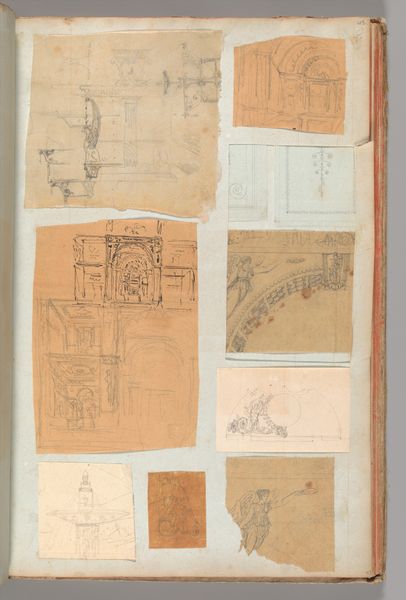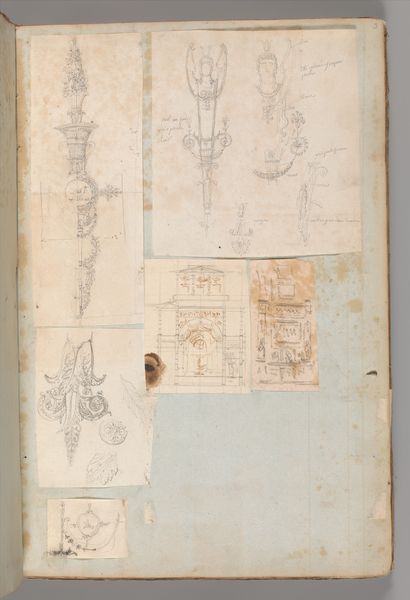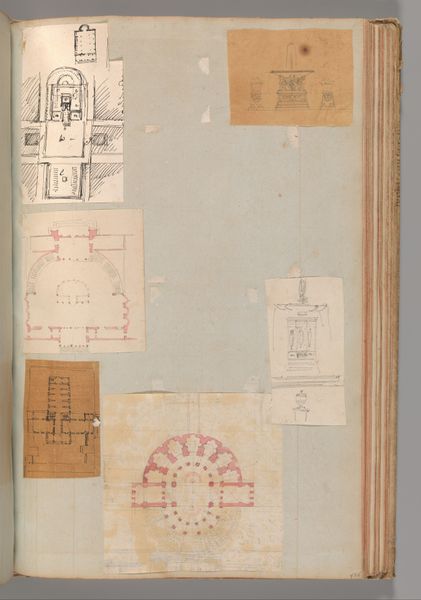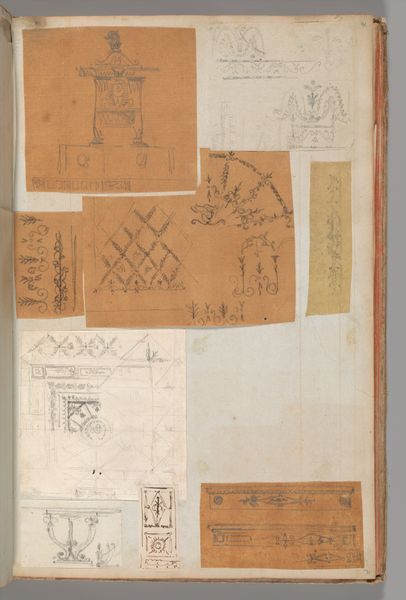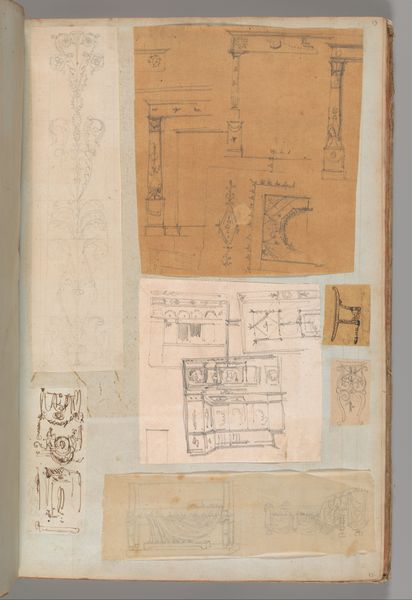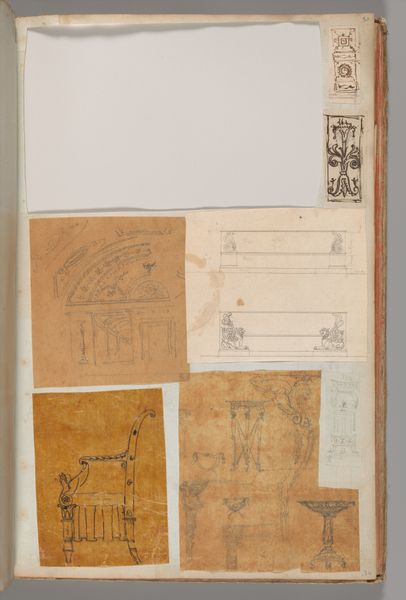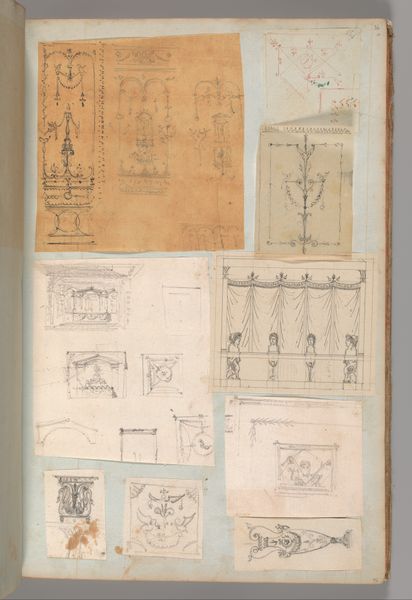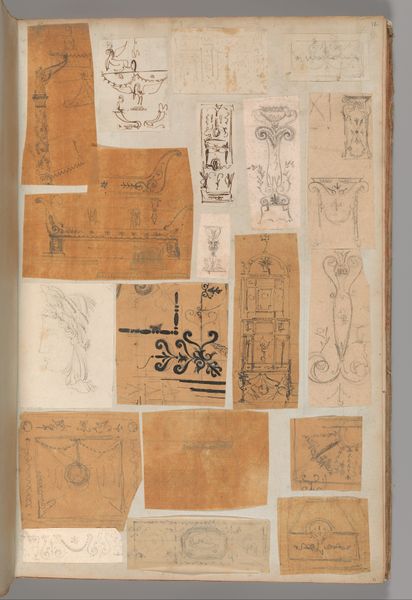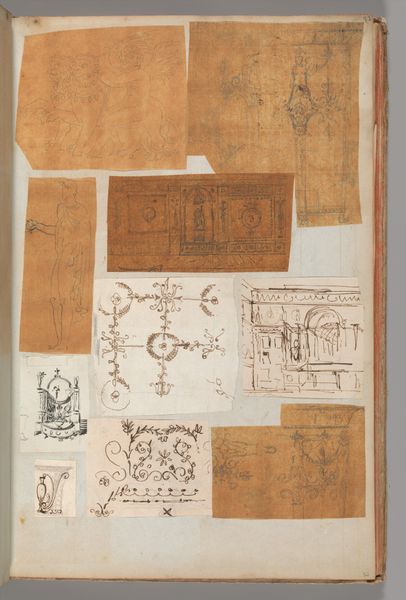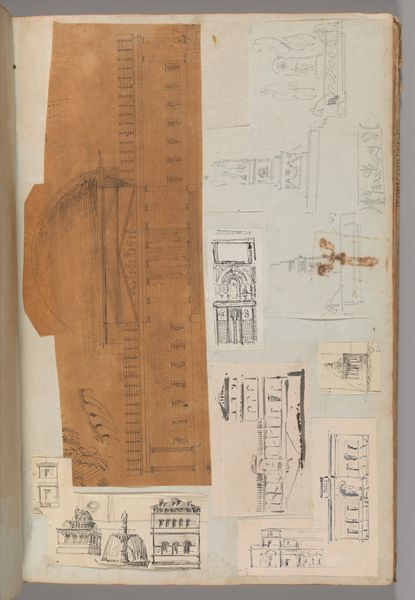
Page from a Scrapbook containing Drawings and Several Prints of Architecture, Interiors, Furniture and Other Objects 1795 - 1805
0:00
0:00
drawing, print, paper, pencil, architecture
#
drawing
#
neoclacissism
# print
#
paper
#
form
#
pencil
#
line
#
architecture
Dimensions: 15 11/16 x 10 in. (39.8 x 25.4 cm)
Copyright: Public Domain
Editor: Here we have "Page from a Scrapbook containing Drawings and Several Prints of Architecture, Interiors, Furniture and Other Objects," made by Charles Percier between 1795 and 1805. It combines drawings and prints on paper with pencil and ink. It feels like a catalog of design possibilities, almost like an early mood board. What strikes you about this scrapbook page? Curator: I'm fascinated by the very nature of this "scrapbook" – a collection of both original drawings and reproductive prints. It speaks volumes about the blurring lines between artistic creation and the burgeoning world of design production at the turn of the 19th century. Consider the labor involved in creating each element and how this format democratizes access to design. What was Percier intending to achieve through such juxtaposition? Editor: Democratization is a fascinating way to put it! So you're focusing on how the means of production are presented and perhaps intentionally confused here. Curator: Precisely. The printing press allowed for the mass dissemination of design ideas, impacting artisans’ access to information and affecting production in craft and architectural workshops. How would a craftsman respond to the simultaneous availability of original designs and readily reproducible patterns? Editor: I hadn't considered that tension before! It's like he's presenting both the exclusive, handcrafted design *and* its potential mass-produced future on the same page. Curator: And note the implications for Neoclassicism! The "style" became detached from the labour, the social framework and cultural contexts where it originated. Can an aesthetic ideal, divorced from production and democratically dispersed, still hold power? Editor: That makes me rethink the entire piece. Initially, I only saw a collection of nice drawings, but it sounds like this book is asking much bigger questions about art and industry. Curator: Indeed. Looking beyond mere aesthetics and form invites richer insight into the art's significance within its time. This closer look revealed quite a bit, right?
Comments
No comments
Be the first to comment and join the conversation on the ultimate creative platform.
